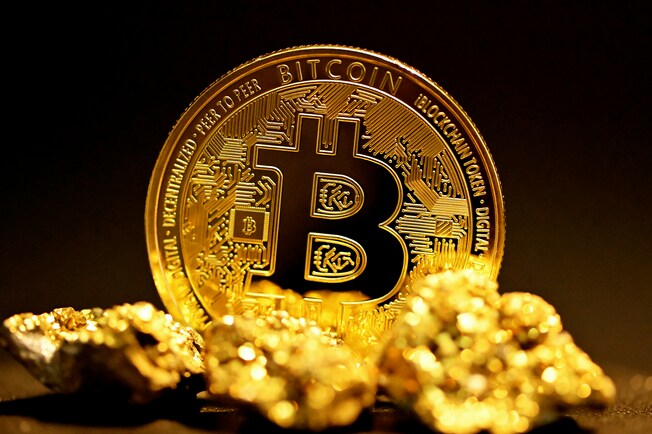
- Who Was Albert Einstein?
Albert Einstein was a German mathematician and physicist who developed the special and general theories of relativity. In 1921, he won the Nobel Prize for physics for his explanation of the photoelectric effect. In the following decade, he immigrated to the U.S. after being targeted by the German Nazi Party.
His work also had a major impact on the development of atomic energy. In his later years, Einstein focused on unified field theory. With his passion for inquiry, Einstein is generally considered the most influential physicist of the 20th century.
- Early Life & Family
Einstein was born on March 14, 1879, in Ulm, Württemberg, Germany. Einstein grew up in a secular Jewish family. His father, Hermann Einstein, was a salesman and engineer who, with his brother, founded Elektrotechnische Fabrik J. Einstein & Cie, a Munich-based company that mass-produced electrical equipment.
Einstein’s mother, the former Pauline Koch, ran the family household. Einstein had one sister, Maja, born two years after him.
Einstein attended elementary school at the Luitpold Gymnasium in Munich. However, he felt alienated there and struggled with the institution's rigid pedagogical style.
He also had what were considered speech challenges, though he developed a passion for classical music and playing the violin, which would stay with him into his later years. Most significantly, Einstein's youth was marked by deep inquisitiveness and inquiry.
Towards the end of the 1880s, Max Talmud, a Polish medical student who sometimes dined with the Einstein family, became an informal tutor to young Einstein. Talmud had introduced his pupil to a children’s science text that inspired Einstein to dream about the nature of light.
Thus, during his teens, Einstein penned what would be seen as his first major paper, "The Investigation of the State of Aether in Magnetic Fields."
Hermann Einstein relocated the family to Milan, Italy, in the mid-1890s after his business lost out on a major contract. Einstein was left at a relative's boarding house in Munich to complete his schooling at the Luitpold Gymnasium.
Faced with military duty when he turned of age, Einstein allegedly withdrew from classes, using a doctor’s note to excuse himself and claim nervous exhaustion. With their son rejoining them in Italy, his parents understood Einstein's perspective but were concerned about his future prospects as a school dropout and draft dodger.
- Education
Einstein was eventually able to gain admission into the Swiss Federal Institute of Technology in Zurich, specifically due to his superb mathematics and physics scores on the entrance exam.
He was still required to complete his pre-university education first, and thus attended a high school in Aarau, Switzerland helmed by Jost Winteler. Einstein lived with the schoolmaster's family and fell in love with Winteler's daughter, Marie. Einstein later renounced his German citizenship and became a Swiss citizen at the dawn of the new century.
- Nobel Prize for Physics
In 1921, Einstein won the Nobel Prize for Physics for his explanation of the photoelectric effect, since his ideas on relativity were still considered questionable. He wasn't actually given the award until the following year due to a bureaucratic ruling, and during his acceptance speech, he still opted to speak about relativity.
In the development of his general theory, Einstein had held onto the belief that the universe was a fixed, static entity, aka a "cosmological constant," though his later theories directly contradicted this idea and asserted that the universe could be in a state of flux.
Astronomer Edwin Hubble deduced that we indeed inhabit an expanding universe, with the two scientists meeting at the Mount Wilson Observatory near Los Angeles in 1931.
- Inventions and Discoveries
As a physicist, Einstein had many discoveries, but he is perhaps best known for his theory of relativity and the equation E=MC2, which foreshadowed the development of atomic power and the atomic bomb.
- Theory of Relativity
Einstein first proposed a special theory of relativity in 1905 in his paper, “On the Electrodynamics of Moving Bodies,” taking physics in an electrifying new direction. By November 1915, Einstein completed the general theory of relativity. Einstein considered this theory the culmination of his life research.
He was convinced of the merits of general relativity because it allowed for a more accurate prediction of planetary orbits around the sun, which fell short in Isaac Newton’s theory, and for a more expansive, nuanced explanation of how gravitational forces worked.
Einstein's assertions were affirmed via observations and measurements by British astronomers Sir Frank Dyson and Sir Arthur Eddington during the 1919 solar eclipse, and thus a global science icon was born.
Einstein’s E=MC2:
Einstein’s 1905 paper on the matter/energy relationship proposed the equation E=MC2: the energy of a body (E) is equal to the mass (M) of that body times the speed of light squared (C2). This equation suggested that tiny particles of matter could be converted into huge amounts of energy, a discovery that heralded atomic power.
Famed quantum theorist Max Planck backed up the assertions of Einstein, who thus became a star of the lecture circuit and academia, taking on various positions before becoming director of the Kaiser Wilhelm Institute for Physics (today is known as the Max Planck Institute for Physics) from 1917 to 1933.
- Becoming a U.S. Citizen
In 1933, Einstein took on a position at the Institute for Advanced Study at Princeton, New Jersey. At the time the Nazis, led by Adolf Hitler, were gaining prominence with violent propaganda and vitriol in an impoverished post-World War I Germany.
The Nazi Party influenced other scientists to label Einstein's work "Jewish physics." Jewish citizens were barred from university work and other official jobs, and Einstein himself was targeted to be killed. Meanwhile, other European scientists also left regions threatened by Germany and immigrated to the U.S., with concern over Nazi strategies to create an atomic weapon.
After moving, Einstein never went back to his native land. It was at Princeton that Einstein would spend the rest of his life working on a unified field theory—an all-embracing paradigm meant to unify the varied laws of physics.
Not long after he began his career at Princeton, Einstein expressed an appreciation for American "meritocracy" and the opportunities people had for free thought, a stark contrast to his own experiences coming of age.
In 1935, Einstein was granted permanent residency in his adopted country and became an American citizen five years later. During World War II, he worked on Navy-based weapons systems and made big monetary donations to the military by auctioning off manuscripts worth millions.
- Einstein and the Atomic Bomb
In 1939, Einstein and fellow physicist Leo Szilard wrote to President Franklin D. Roosevelt to alert him of the possibility of a Nazi bomb and to galvanize the United States to create its own nuclear weapons.
The U.S. would eventually initiate the Manhattan Project, though Einstein would not take a direct part in its implementation due to his pacifist and socialist affiliations. Einstein was also the recipient of much scrutiny and major distrust from FBI director J. Edgar Hoover.
After learning of the 1945 bombing of Hiroshima, Japan, Einstein became a major player in efforts to curtail usage of the a-bomb. The following year he and Szilard founded the Emergency Committee of Atomic Scientists, and in 1947, via an essay for The Atlantic Monthly, Einstein espoused working with the United Nations to maintain nuclear weapons as a deterrent to conflict.
- Einstein’s Brain
During Einstein’s autopsy, pathologist Thomas Stoltz Harvey removed his brain, reportedly without his family's consent, for preservation and future study by doctors of neuroscience.
However, during his life, Einstein participated in brain studies, and at least one biography claimed he hoped researchers would study his brain after he died. Einstein's brain is now located at the Princeton University Medical Center. In keeping with his wishes, the rest of his body was cremated and the ashes scattered in a secret location.
In 1999, Canadian scientists who were studying Einstein’s brain found that his inferior parietal lobe, the area that processes spatial relationships, 3D-visualization, and mathematical thought, was 15 percent wider than in people who possess normal intelligence. According to The New York Times, the researchers believe it may help explain why Einstein was so intelligent.
- Legacy
Since Einstein’s death, a veritable mountain of books has been written on the iconic thinker's life, including Einstein: His Life and Universe by Walter Isaacson and Einstein: A Biography by Jürgen Neffe, both from 2007. Einstein's own words are presented in the collection The World As I See It.
In 2018, a team of scientists confirmed one aspect of Einstein's general theory of relativity, that the light from a star passing close to a black hole would be stretched to longer wavelengths by the overwhelming gravitational field.
Tracking star S2, their measurements indicated that the star's orbital velocity increased to over 25 million kph as it neared the supermassive black hole at the center of the galaxy, its appearance shifting from blue to red as its wavelengths stretched to escape the pull of gravity.
Source: Biography

















Leave a Reply